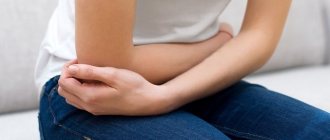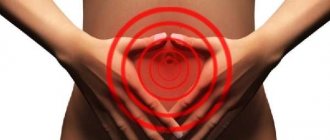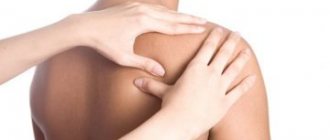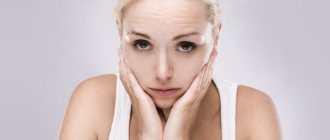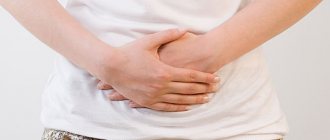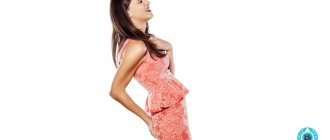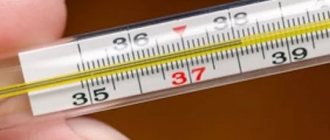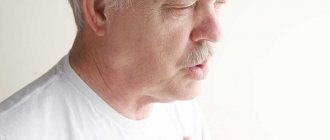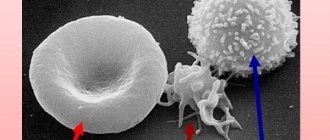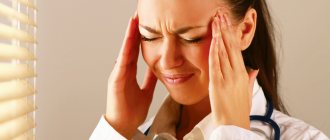Every person has experienced a headache at least once in their life. However, when the back of the head hurts, the reasons and what to do in this situation are the main questions that concern the patient.
Some people are very familiar with this problem, and they feel this unpleasant feeling quite often. Doctors say that an occipital headache can be a harbinger of serious illnesses, so it should not be ignored. Some people complain that they have headaches, pain in the back of the head and in the upper neck. At the same time, the sensations are quite varied. In some cases, the pain is sharp, and sometimes it is throbbing and dull. A problem like this may not go away for a very long time. Unpleasant sensations can be constant and pulsating, and sometimes they occur for a while and go away immediately. Regardless of how severe the pain is and where it originates, it causes great discomfort. It becomes difficult for a person to concentrate and do even everyday activities, everything falls out of hand, and it takes a lot of time to complete even the simplest tasks. Headaches especially cause a lot of problems for people whose work requires extreme precision and high concentration. Being distracted by his own problem, an employee may miss an important point, which will affect the quality of the work performed. Many people try to get rid of headaches with medications and even traditional medicine. However, this is clearly not enough, as the pain often returns again. Pain in the occipital region can occur under the influence of various factors, including very serious ones. Therefore, before you think about what to do when the back of your head hurts, you need to get rid of the cause of the discomfort.
Many people who lead a sedentary lifestyle experience pain in the back of their heads.
Characteristics of pain
Painful sensations localized in the occipital zone often arise due to provoking factors (insufficient sleep, overwork, injury) or may be a symptom of pathology. Often pain in the right side of the head is accompanied by characteristic neurological symptoms:
- Tinnitus, hearing problems of neurosensory etiology.
- Attacks of nausea, often ending in vomiting.
- Numbness, convulsions, spasms in the extremities.
- Dizziness, transient states of confusion.
- Impaired motor coordination.
Neurological symptoms are always a sign of damage to the structures of the nervous system. Features of painful sensations may indirectly indicate the cause of the occurrence. Types of pain localized in the back of the head on the right:
- Pulsating with increasing intensity. Usually occurs due to arterial hypertension.
- Increased pain after head movements or general physical activity. Often occurs against the background of muscle tissue diseases.
- Constantly recurring attacks of spontaneous, acute pain in the right side of the head in the occipital region, followed by attenuation. Indirectly indicates a pathology such as Barré-Lieu syndrome, also known as cervical migraine.
- Severe headache in the back of the head on the right, radiating to the frontal, temporal, parietal region. Characteristic of vertebral artery syndrome (impaired blood circulation in the circulatory system located inside the spine, compression of the nerve roots located in the area of the vertebral artery).
If attacks of cephalalgia recur, it is necessary to undergo examination and determine the cause of the disturbances. Otherwise, without treatment, the disease will progress, significantly worsening a person’s quality of life.
Folk remedies
If it is not possible to take medicine, then you can resort to traditional methods. With their help, it is quite possible to relieve pain or even completely eliminate pain.
- Compresses with cabbage leaves on the back of the head.
- Tea with linden or sage.
- Rubbing lavender oil onto the right side of the back of the head.
- Warm compresses to the earlobes.
- St. John's wort decoction.
- Infusion of coltsfoot.
It should be clarified that these methods will help if a person has already been diagnosed. But in general, the effectiveness of folk recipes is relatively low. It is unlikely that medicinal herbs will help with meningitis or a migraine attack.
Causes
More than 35% of the blood flows to the brain through the vertebral arteries, which pass through openings in the vertebrae in the back of the neck. The surrounding bone tissue of the vertebrae protects the arteries from damage. On the other hand, such an arrangement contributes to the compression of blood flow elements in diseases of the spine, accompanied by deformation, changes in the shape of the vertebrae, the appearance of osteophytes, and the proliferation of cartilage tissue.
Such destructive changes are caused by diseases such as osteochondrosis, displacement of the vertebrae as a result of injury, or a hernia in the area of the intervertebral disc. As a result, vertebral artery syndrome develops. This is why there is a headache in the back of the head on the right and disorders such as increased fatigue, asthenia, deterioration of cognitive abilities, visual dysfunction, and rarely speech disorder are observed. Causes of the pathological condition when the back of the head on the right side hurts:
- Degenerative diseases of the cervical spine (osteochondrosis, hernia in the intervertebral disc area).
- Injuries in the cervical spine.
- Infectious diseases (meningitis, encephalitis).
- Diseases of muscle tissue.
- Increased values of intracranial pressure.
- Neuralgia (inflammation of the nerves).
If you have a headache in the back of the head on the right, the discomfort is often associated with long-term arterial hypertension. If foci of ischemia and narrowed vessels are located in the occipital zone, an increase in blood pressure is accompanied by painful sensations in this location. High blood pressure is characterized by problems such as tinnitus, dizziness, and the appearance of foreign objects in the field of vision. A condition where the right side of the back of the head hurts can be caused by the following factors:
- Physical and mental stress, frequent stressful situations.
- Insufficient or excessive sleep.
- Unhealthy, unbalanced diet, characterized by a deficiency of nutrients.
- Sedentary lifestyle.
- Bad habits (alcohol, smoking).
An uncomfortable neck position in women who constantly wear high-heeled shoes can provoke cephalgic syndrome. If cases of headaches in the back of the head on the right are isolated and not associated with illness, simple measures will help eliminate the discomfort - wearing comfortable shoes, a proper daily routine and a healthy lifestyle. Often, episodes when the right occipital part of the head regularly hurts indicate serious malfunctions in the body.
Cervical osteochondrosis is characterized by deformation of the vertebrae, accompanied by compression of blood vessels and nerve endings. As a result, there is a disturbance in blood flow, and a bursting, throbbing pain occurs behind the right ear in the back of the head, characteristic of a condition when blood pressure values sharply increase.
Myogelosis is a violation of blood flow in muscle tissue, occurring against the background of loss of elasticity and softness of muscle fibers. Develops due to chronic muscle overstrain. The processes of muscle contraction and relaxation are accompanied by the destruction and subsequent restoration of protein structures. With intense, prolonged stress on the muscles, protein tissue is not fully restored.
As a result, various physiological and physicochemical disorders occur, which leads to a change in the normal excitability and lability of muscles. Some muscle fibers are in a state of pessimum - inhibition of the activity of nervous and muscle tissue, which develops as a result of intense and frequent nervous stimulation.
The other part is in a borderline state of loss of sensitivity that occurs in response to strong external irritation. The pathological process is called parabiosis. As a result of partial hyaline degeneration, individual muscles are in a state of contracture (tight, inactive).
Myogelosis is characterized by the appearance of persistent, painful compactions in muscle tissue. The disease leads to decreased muscle elasticity, limitation, and stiffness of movements. Persistent pain in the back of the head on the right side of the head indicates serious disorders and the possible development of myofibrosis, in which muscle tissue is replaced by connective tissue.
Cervical migraine
If the right hemisphere of the head hurts, the cause may lie in impaired blood flow in this area. Cervical migraine or Barré-Lieu syndrome is a form of vertebral artery syndrome. It manifests itself as excruciating painful sensations that are associated with compression of the nerve endings surrounding the vertebral arteries in the form of sympathetic plexuses.
In this case, the back of the head hurts on the right or left behind the ear periodically, in paroxysms. Other manifestations of pathology: darkening of the eyes, narrowing of visual fields, transient confusion, nausea, panic attacks, depression. Painful sensations and the appearance of other side effects are often associated with sudden movements of the neck, rapid tilting of the head, and prolonged stay in an uncomfortable position.
Myositis
Inflammatory processes occurring in skeletal muscles due to exposure to pathogenic microorganisms or without infectious etiology. The main non-infectious causes: physical overload, hypothermia, microtrauma. Inflammation in the muscles without the participation of a pathogen is typical for professional athletes.
Provoking factors are often foci of infection localized in other parts of the body - influenza, acute respiratory infections, chronic infectious diseases of the kidneys, liver, heart and other internal organs. In the early stages of myositis, the back of the head hurts on the right after physical activity.
The progression of the disease leads to an increase in the strength and duration of painful sensations, which often do not disappear even at rest. The pathology is characterized by manifestations: loss of elasticity and softness of muscle tissue, hardness, muscle soreness, stiffness of movement, deterioration in general well-being.
Intracranial pressure
One of the causes of severe pain in the right occipital part of the head is increased intracranial pressure. Cerebral hypertension occurs against the background of narrowing, obstruction (blockage) of the ducts through which cerebrospinal fluid is drained. Infectious diseases (meningitis, encephalitis), hydrocephalus, stroke, tumors, and injuries in the head area can provoke an increase in intracranial pressure. It is worth paying attention to the symptoms: drowsiness, visual dysfunction, attention disorder, deterioration of mental activity and memory.
Neuralgia
If your head hurts in the back, lower right, the cause is often associated with neuralgia affecting the occipital nerve. The disease manifests itself as a sharp, shooting pain localized in the back of the head on the right or left side. The main causes of occurrence: hypothermia, prolonged stay in an uncomfortable position.
Treatment
To eliminate pain in the back of the head, conservative methods of therapy are used. These include:
- drug treatment;
- wearing a Shants collar;
- alternative medicine.
Drugs
The use of medications allows you to influence the cause of pain, as well as reduce the severity of pain during attacks. For this purpose, the attending physician may prescribe:
- Anti-inflammatory drugs. Among them, the most effective are Ibuprofen, Celecoxib, Ketoprofen, Dexamethasone, Prednisolone.
- Antibacterial drugs. Azithromycin, Tetracycline, Cefuroxime, Doxycycline are used to treat infectious processes.
- Muscle relaxants. If there is a need to relieve spasms of the muscle fibers of the neck, Baclofen, Mydocalm, Sirdalud are used.
- Chondroprotectors. This group of remedies is effective in the presence of problems with the spinal column, the structures of which pinch the nerve fibers. In this case, it is recommended to use Chondroitin, Alflutop and Teraflex.
- Painkillers. Acute pain is relieved with Dexalgin, Ketanov, Amidopyrine or Sulindac.
Shants collar, what is it for?
The use of this device makes it possible to significantly reduce the load on the muscular system of the neck. As a result, pain in the back of the head is relieved. Doctors often prescribe wearing a Shants collar after surgery or injuries to the cervical spine. He is able to make your posture correct and securely fix your neck in the desired position.
ethnoscience
Alternative medicine recipes are used in combination with medications and only after the permission of the attending physician. The most effective remedies for treating pain in the back of the head are:
- Lavender oil. To prepare the product, dissolve 1 teaspoon of oil in 3 cups of boiling water. Inhalations should be done for at least 15 minutes. It can also be used to massage the temples along with lemon balm.
- Apple vinegar. This remedy has a number of medicinal properties in the treatment of pain in the back of the head. To prepare the medicine, you need to stir 2 tablespoons of vinegar in 200 ml of water and drink the mixture. This manipulation will significantly reduce the intensity of headaches and also normalize the general condition of the body.
Diagnostics
To find out exactly why the back of the head on the right side of the head hurts, you need to make an appointment with a neurologist. After a visual examination, collecting anamnesis, checking reactions and reflexes, the patient’s neurological status is determined, and the probable causes of headache localized in the occipital part of the head on the right are named. To clarify the diagnosis, an instrumental examination is prescribed:
- MRI, CT. Allows you to detect pathological conditions (narrowing, compression of the ducts) that provoked a violation of the outflow of cerebrospinal fluid. The study reveals brain pathologies - tumors, areas of hemorrhage, signs of infectious or ischemic lesions of the brain matter.
- Rheoencephalography. Study of the circulatory system of the brain, blood flow speed, features of blood supply to areas of the head.
- Electromyography. Shows the nature and intensity of bioelectrical activity in muscle tissue.
- Dopplerography. Study of the bloodstream in the area of the back of the head and neck.
Intracranial pressure is measured using a lumbar puncture or ventriculostomy procedure. Certain difficulties in differential diagnosis arise due to the large number of structures studied (intervertebral discs, arteries, meninges, muscle tissue, ligaments) and mechanisms responsible for the development of cephalalgia.
What to do with pain in the back of the head?
So what to do if the back of your head hurts? An unpleasant symptom can be temporarily eliminated by taking medications or using decoctions of medicinal herbs. However, all these are temporary measures, since a real cure can only be obtained after visiting a doctor and thorough diagnosis. If you find out what exactly is the cause of frequent occipital pain, you can solve this problem once and for all.
For the treatment and prevention of headaches, massage and exercise therapy are prescribed
When making a diagnosis, the doctor relies on the symptoms described by the patient. For example, a person may complain that the back of the head on the left hurts. If there is a suspicion of problems with the spine, an x-ray may be prescribed. Procedures (physical therapy, massage and manual therapy techniques) are prescribed as treatment and prevention of headaches. When diagnosed with osteochondrosis, special attention should be paid to self-massage. It can be done at any time several times a day. Massage procedures are also well suited as a preventive measure for people with sedentary work.
Treatment methods
Treatment of pain localized in the right occipital part of the head is prescribed after identifying the causes of the pathology. Depending on the type of disease, the following groups of drugs are prescribed:
- Painkillers, antipyretics.
- Nonsteroidal anti-inflammatory drugs.
- Muscle relaxants (lower muscle tone, eliminate muscle spasms).
- Osteoprotectors (restore bone tissue, inhibit degenerative changes in the bone structures of the spine).
- Nootropic (stimulate cellular metabolism in nervous tissue).
If the pain is associated with an infection, taking antibacterial drugs is indicated. For diseases of the muscle tissue and musculoskeletal system, in addition to drug therapy, physiotherapy, massage in the cervical-collar area, and restorative water procedures are indicated.
Which doctor should I make an appointment with if I have frequent pain in the occipital region?
First, you need to take a coupon for a consultation with your local therapist. He will perform an objective examination, measure blood pressure, check pulse, and listen to complaints. Based on the symptoms, he will give a referral for a consultation with a neurologist, orthopedist, or surgeon. They, in turn, will issue a coupon for MRI, CT, and physiotherapy. If necessary, a prescription for nootropics, anesthetics, and vasodilators will be issued.
Many people suffer from pain in the back of the head for years, which leads to constant weakness and fatigue. It is worth visiting a doctor once, finding out the exact cause of the ailment and receiving competent treatment that will relieve pain for a long time.
Prevention
It will be possible to avoid the development of cephalgic syndrome by following the recommendations of doctors. Preventive actions:
- Preventing hypothermia.
- Dosed physical activity without excessively increasing the load.
- Using an orthopedic mattress and a comfortable pillow for sleeping.
- Dietary food with limitation of animal fats, fried, too salty foods.
- A full night's rest of at least 8 hours.
Timely, correct treatment of diseases that provoked painful sensations will help get rid of unpleasant symptoms.
Regularly recurring painful sensations in the occipital area on the right indicate various pathologies. A thorough diagnosis will help identify the causes of disorders, and correct therapy will prevent the progression of the disease.
Diagnostic methods
If the back of the head hurts severely on the right side, you should immediately consult a neurologist. After listening to complaints and conducting a visual examination, the doctor refers you for an in-depth examination.
- You need to donate blood and urine for analysis.
- You should check your cholesterol levels.
- It is advisable to conduct daily blood pressure monitoring.
- X-ray. Allows a thorough examination of the cervical spine. X-rays can reveal cracks in the occipital bone, the formation of tumors and unwanted curvature of the cervical spine.
- Study of the vessels of the brain and neck. This measures the intensity of blood flow. Prescribed to eliminate migraine and high intracranial pressure.
- CT scan. It resembles an x-ray, but pictures are taken in different projections and the data is processed on a computer. Makes it possible to see anatomical formations much better. For occipital pain, this study is performed if there is a suspicion of tumor development.
- MRI. It is not carried out if there are metal objects in the body. Not recommended for people with mental disorders and pregnant women. The study is very informative and is carried out if other methods have not identified the cause of the pain.
- 8. Neuromyography. The study clarifies the diagnosis.
If painful sensations are provoked by external factors and not diseases, they often disappear on their own.
Myogelosis as a cause of pain in the occipital region
The disease is characterized by tightening of the muscles in the neck area, which leads to unpleasant sensations during movement. Pain most often occurs not only in the back of the head, but also in the upper area of the shoulders and neck. Character of sensations: sharp, sudden. In some cases, it is aching, worsening when turning the head.
Reasons why myogelosis occurs:
- passive lifestyle;
- muscle atrophy;
- long stay in a draft;
- inaccurate execution of exercises for the neck muscles.
Myogelosis is fairly easy to treat. To alleviate the patient's condition, non-steroidal anti-inflammatory drugs and drugs to enhance immunity are most often used. It is also appropriate to use ointments with a warming effect in the neck and upper shoulder area.
Pain with cervical myositis
This disease is one of the types of problems with the spine; it consists of rapid aging and deformation of the cervical vertebrae and intervertebral space. Often complications occur in several parts of the spine at once. Lesions localized in the cervical region are often accompanied by pain in the back of the head. The disease develops due to the following factors:
- Sedentary, sedentary lifestyle.
- Overweight.
- Genetic predisposition.
- Bad habits (alcohol, cigarettes).
This disease of the spinal column is as follows: the patient’s entire cervical area of the spine is affected, deformation of the vertebrae in the neck area occurs, and neoplasms appear on them, which constantly cause the person severe pain not only in the cervical region, but also in the back of the head. Cause of the disease:
- Sedentary lifestyle.
- Advanced age of a person.
Inflammatory reactions in the skeletal muscles with damage to bone tissue - this is how this disease is characterized. When it occurs, one of the symptoms is a headache (severely) from the back of the head. Factors contributing to the occurrence of the disease:
- Complications after an infectious disease.
- Hypothermia of the body.
- Spinal injuries, sprains.
The disease is accompanied by constant aching pain in the neck, which also affects the back of the head.
- Nervous overstrain.
- Frequent stress.
- Incorrect posture.
- Colds.
This disease, widespread in the modern world, is characterized by headaches in the back of the head, temples and frontal lobe, the patient has a feeling of fog when looking at something, noise in the ears, and difficulty concentrating.
https://www.youtube.com/watch?v=NL357GfJzuo
If the back of your head hurts, the pain can also be caused by:
- pathologies in the cervical spine due to a person’s professional activity;
- experienced stressful situations;
- vascular diseases in the neck area, accompanied by pressure surges;
- neuralgia.
Cervical migraine is diagnosed more often in older people. However, in recent years the disease has become “younger” and is diagnosed in men over the age of thirty. Cervical migraine is characterized by regular aching pain in the back of the head and neck. In some cases, the pain may radiate to the temples or forehead area. In some cases, the disease is accompanied by ringing and noise in the ears, clouding and darkening of the eyes, and dizziness in the morning.
It is important to determine the correct causes of pain; true hemicrania also has similar symptoms. Diagnosing the disease is simple: you should press down the artery along the spine, which will provoke additional compression.
This disease can cause not only pain in the occipital region, but also blurred vision, constant migraines, ringing in the ears, fainting, and decreased memory and cognitive abilities. It is diagnosed more often in older people, but approximately 15% of cases of cervical spine disease are typical for schoolchildren.
If, with osteochondrosis (sometimes it seems that for no reason) the back of the head hurts, what should you do? Tablets prescribed by a neurologist after a thorough examination of the patient are one of the tools for normalizing this condition. Osteochondrosis is not characterized by constant pain - it is often sharp and temporary.
Effective methods of treating pathology
After the general practitioner, after proper diagnosis, determines why the head hurts in the back, he will prescribe appropriate treatment or refer you to specialized specialists for additional consultation. If such symptoms occur as a result of such serious diseases as increased arterial and intracranial pressure, doctors use emergency etiotropic therapy.
If the main causes of pain in the back of the head are pathologies that do not pose a threat to the patient’s life, then a comprehensive treatment is prescribed, which includes a basic, fairly effective technique.
| Name of procedure | Main characteristics |
| Therapeutic massage | Most patients noted that if the back of the head hurts, simple manipulations in the neck area significantly reduce the intensity of discomfort. And professional massage of a specific muscle group, once a diagnosis has been established, contributes to the patient’s rapid recovery. But treatment should only be carried out by a qualified chiropractor. The procedures are carried out in courses (over several months), after which the occipital pain completely goes away. You can independently influence the neck area, sitting in a comfortable position. If you have high blood pressure, the procedure is contraindicated. |
| Exercise therapy | If you have a headache, then a specially selected set of classes will come to your aid. Therapeutic and prophylactic load on the spine will make it possible to relax the ligaments and neck muscles, thereby restoring normal blood supply. This method of therapy has no contraindications, the main thing is the correct distribution of the load. |
| Physiotherapy (electrophoresis, laser or ultrasound therapy, magnetic therapy) | Excellent help with discomfort in the head area, cervical osteochondrosis, vascular pathologies, neuralgia. |
| Manual treatment | A special technique used in the treatment of various headaches. Excellent for pain in the back of the head caused by neuralgia, osteochondrosis, stress, and occupational diseases. |
| Acupuncture | This method of treatment is fully justified for osteochondrosis, neuralgia, and stressful situations. With a targeted effect on the problem area. |
| Cranial osteopathy | A fairly effective therapy that has an intense effect on the patient if he is constantly dizzy. But the based recommendation of experts is a correct lifestyle, giving up bad habits. Therefore, if you are constantly bothered by frequent headaches in the back of your head, then this is the main way to enhance the effectiveness of the treatment. |
Treatment of painful syndrome: basic recommendations
When the back of the head hurts on the left or right side of the head, this is not a reason to urgently take antispasmodics. Mild attacks can be easily eliminated by following simple recommendations:
- Complete rest for about 8 hours.
- Consumption of plant and dairy products.
- During migraine attacks, it is recommended to darken the room.
- Walks, free access to fresh air.
- Systematically moisten the room.
- Limit the amount of alcohol, stop smoking.
- Compress made from young cabbage leaves.
- Physical activity.
- Control over emotions and psychological state.
Attacks are easily eliminated by massage of the neck and back of the head, the main task of which is to relax the muscles of the cervical-collar area and head as much as possible.
To restore the psychological state, small courses of therapeutic and preventive herbal therapy are indicated:
- valerian and mint;
- oregano, motherwort;
- yarrow.
Essential oils perfectly relieve pain: rosemary, lavender, lemon, aromatic orange, eucalyptus leaves. They can be mixed with massage cream, simply applied to a problem area, or used as one of the components of inhalations and compresses. Cool water procedures effectively help cope with cramps.
Some features of headaches
Experts identify the main types of pathological conditions:
- primary – not related to other diseases (about 90%);
- secondary condition – accompanied by inflammatory processes (up to 10%)
But, only about 4 percent of pain in the back of the head is a sign of a serious illness that threatens not only the health, but also the life of the patient.
Pain syndrome affects various parts of the head: temporal, frontal, occipital and parietal.
Vegetovascular dystonia
This disease occurs due to vascular damage and impaired blood circulation to the brain. It is more common in women over the age of thirty. Accompanied by the following symptoms:
- ringing and noise in the ears;
- migraine, in which pain flows from the temples to the back of the head and vice versa;
- dizziness;
- anxiety, suspiciousness, insomnia;
- impairment of cognitive functions.
Therapy for vegetative-vascular dystonia is quite complex: the drug is selected individually. In some cases, nootropics help, but more often vasodilators are needed. It is also recommended to reduce physical activity and, as far as possible, avoid hypothermia, lack of sleep, and overwork.
If the back of your head hurts and presses, what should you do? You should try to fall asleep after doing a light massage of the neck and upper back, and take a vasodilator.
Physical fatigue and muscle strain
Characteristic of people who regularly experience physical activity. Most often, the cause is performing strength exercises with weights, in which the execution technique is not followed. For example, back squats: Many athletes tilt their heads down and place the barbell too close to their neck.
What to do if the back of your head hurts? Drug therapy and physiotherapy are necessary, otherwise the symptoms will increase. A competent course of treatment will help get rid of the manifestations of osteochondrosis for several years. Physiotherapy procedures and pills are prescribed by a neurologist. A course of magnetic therapy is very good for osteochondrosis.
A course of intramuscular injections of drugs containing B vitamins (pyridoxine, thiamine, nicotinic acid, cyanocobalamin) is also necessary. In advanced stages of the disease, it is impossible to do without the use of anesthetic drugs. You can be treated with non-steroidal anti-inflammatory drugs, since antispasmodics may not have the desired effect.
- Very often, some athletes or, on the contrary, people far from sports, during intense physical exertion, may feel pain in the back of the head, frontal part, goosebumps or tingling in the head area
- Some people experience some head pressure. It seems as if the head was tied with a rope, or a tight hat was put on it
- All these signs appear due to a sharp spasm of blood vessels arising from severe physical stress
- Very often, some athletes or, on the contrary, people far from sports, during intense physical exertion, may feel pain in the back of the head, frontal part, goosebumps or tingling in the head area
- Some people experience some head pressure. It seems as if the head was tied with a rope, or a tight hat was put on it
- All these signs appear due to a sharp spasm of blood vessels arising from severe physical stress
Diagnosis of painful syndrome
The examination begins with a consultation with a specialist and obtaining an appropriate referral for diagnostics. The following methods will allow you to determine an accurate diagnosis:
- MRI of the head, cervical spine;
- Ultrasound of soft tissues, vessels of the neck and head, thyroid gland;
- electroencephalogram;
- X-ray examination;
- neuromyography, etc.
At the first symptoms of migraine, you should seek help from a neurologist, who will not only prescribe a comprehensive examination, but also the correct treatment or recommend that the patient see a highly qualified specialist.
I hit the back of my head and have a headache: what to do?
Traumatic brain injuries are a common cause of pain in the back of the head. This condition is more typical for men, but women also sometimes hit their heads. The insidiousness of such symptoms is that they can occur several years after the fact of the injury. Closed head injuries are a very dangerous condition. To diagnose them, you will have to undergo an MRI or CT scan. This will help determine the extent of tissue damage and the exact location of the injury.
Diagnosis of this problem is carried out either by a neurologist or a surgeon. Drug treatment can be different: these include nootropics, vasodilators, anesthetics, and vitamin-mineral complexes.
Prevention and treatment
Before visiting the clinic, you can slightly alleviate the symptoms of the disease. To reduce the intensity of pain, people take anti-inflammatory drugs such as Ibuprofen.
If discomfort in the neck and back of the head appears very often, then you should make changes to your diet. First of all, you need to eat more fatty fish containing Omega-3 acids. They actively resist inflammatory diseases.
Massages and other physical therapy treatments may be helpful. Using electrophoresis, blood flow to stagnant muscle cells increases and the outflow of negative lactic acids increases. Warming massages of the neck and back help relieve or alleviate headaches.
If the cause of such an unpleasant condition is osteochondrosis, then it will be useful to engage in physical therapy. In addition to exercises, doctors also prescribe the patient vitamin complexes and ointments that will alleviate the condition.
To relieve discomfort in the problem area, you should try to relax and stretch the muscle tissue of the neck. In this case, you need to sit on a chair without touching the back, hold your head with your hands (thumbs should be on your cheekbones, and the others should be placed on the back of your head). In this position, lean back, hold your head with your hands and resist. You should hold on like this for 5-7 seconds, and sit down in the starting position (already leaning on the back of the chair). This exercise should be done in several cycles.
A good prevention of this kind of pain is a correct and active lifestyle. You need to sleep at least 7-8 hours a day, using an orthopedic mattress and pillow. Monitor your posture and work in a chair with a large backrest. In addition, you should try to lead a healthy lifestyle and be careful about your diet. If these syndromes occur frequently, you should not eat a lot of smoked foods, chocolate products, various kinds of nuts, spicy foods and spices. Among fruits, you should limit your consumption of bananas. You need to try to forget about your bad habits and not overwork, provide your body with good rest, and spend more time in the fresh air.
Basic methods of prevention, recommendations
If the back of your head hurts, only your attending physician can tell you what to do after appropriate diagnosis. But the patient can take some measures on his own:
- if possible, you should not take analgesics, as they can adversely affect kidney function;
- simple ways to avoid prolonged discomfort: do not ventilate the room, avoid loud noise, spend more time in the fresh air;
- stop consuming nicotine and various alcoholic beverages;
- Cool compresses (or warm, depending on the person’s reaction) will help reduce the intensity of pain;
- various lotions from freshly squeezed leaves of young cabbage or grapes, or horseradish and onions;
- tea based on medicinal herbs, which reduces the intensity of discomfort and has an excellent sedative effect: medicinal valerian, high pharmaceutical primrose, tincture of meadowsweet leaves or linden tea, field sage and peppermint (up to 4 cups daily);
- various essential oils: applied to the neck, forehead, temples, aromatic peppermint or rosemary oil (drop a couple of drops on the pillow before bed);
- small manipulations on problematic areas (circular movements);
- for constant stress and mental disorders, an excellent remedy is autogenic training, therapeutic and preventive yoga classes.
Not only with systematic migraine attacks, but also in order to find out why the headache in the neck area is necessary to seek help from a doctor, for timely diagnosis and prescription of adequate treatment. The specialist will need to describe the main symptoms of the pathology, as well as the frequency of occurrence of such attacks. It is worth considering that the symptoms of headaches, which are systematic, cannot be calmed down with simple painkillers, since the cause of constant discomfort may lie in the presence of a serious inflammatory process occurring in the patient’s body.
Why does the back of my child’s head hurt?
Pain in the back of the head in children is quite rare. Among the reasons for its manifestation may be increased muscle tone in the neck and spine.
Helpful information
Tightening of the neck muscles can be caused by a person being in an uncomfortable position for a long time, hypothermia of the neck, or curvature of the spine with compensatory overstrain of the muscles along the spinal column.
An increase in symptoms is observed when changing body position, as well as turning the head.
If the pain is of a compressive nature and moves to the temples, then the child becomes capricious and tries to take a position that reduces its intensity. Symptoms include crying and moodiness. This type of pain may be associated with increased intracranial pressure and impaired blood flow from the veins of the brain. Less commonly, the causes are changes in the vascular wall against the background of an infectious process.
Also one of the reasons is traumatic exposure. Pain, which is a consequence of injury, is much more common than other causes in childhood. Damage to the occipital region is caused by a fall on the back or a blow to the head from behind. In some cases, a person, at the time of injury, loses consciousness or notices impaired visual function.
Spasms in the back of the head on the left: types
A painful syndrome may appear with slight movement. Some patients believe that it is not their head that hurts, but their neck after prolonged work at the computer, due to overexertion.
There are several types of this syndrome:
- Acute pain: depression, negative emotions, stress.
- Dumb. Characterized by unpleasant discomfort. It is impossible to touch the problem area. Similar symptoms are observed in people suffering from osteochondrosis and arthritis.
- Aching. The pathological condition occurs due to spasms of the shoulder and neck muscles. Very often it is observed with increased intellectual load.
- Throbbing pain is a consequence of high blood pressure and often occurs after waking up in the morning. Accompanied by “white spots” before the eyes and extraneous sounds in the ears.
Regardless of the type of syndrome, pain in the occipital part of the head causes a lot of inconvenience and does not allow you to concentrate on performing daily duties. Therefore, if the attacks are systematic, it is recommended to undergo examination.
